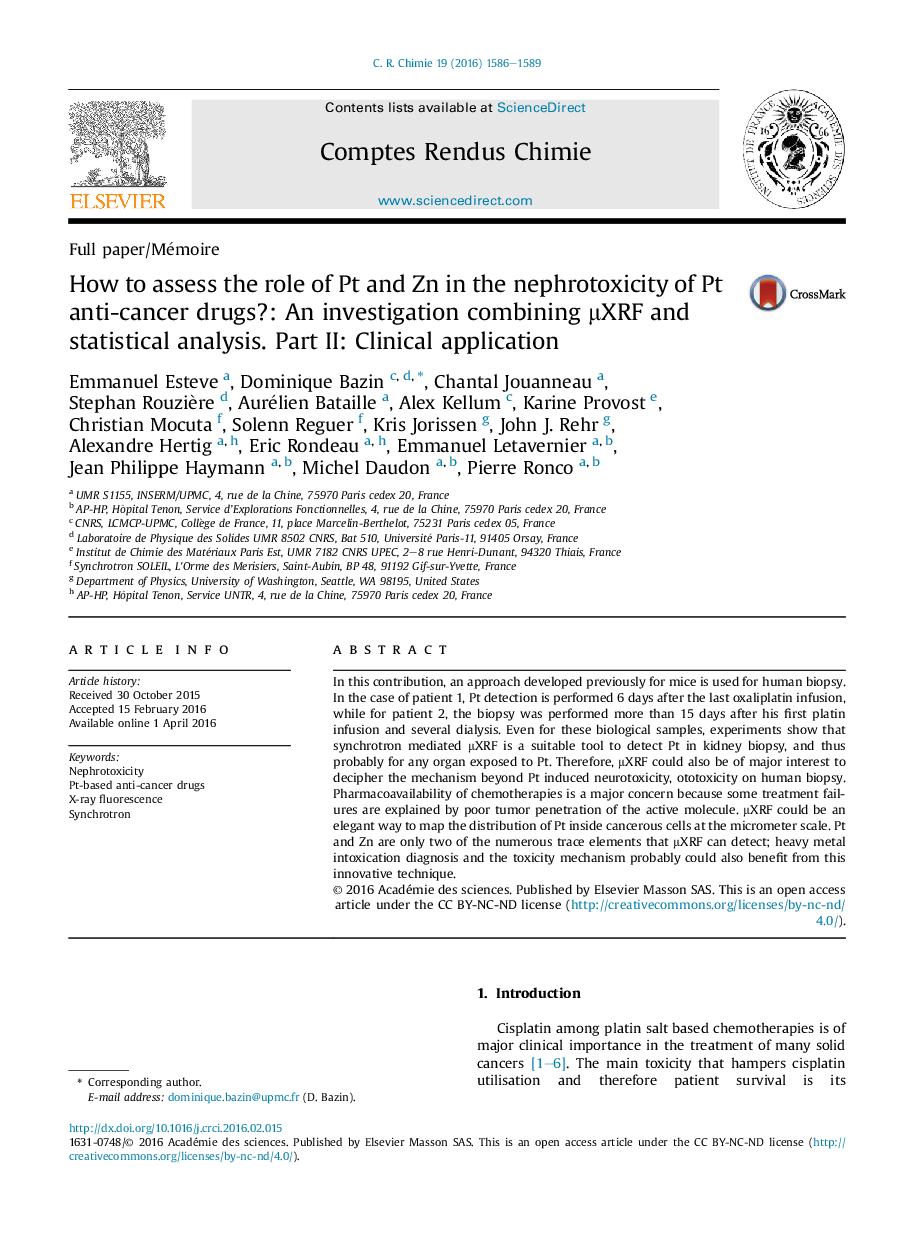| Article ID | Journal | Published Year | Pages | File Type |
|---|---|---|---|---|
| 6468968 | Comptes Rendus Chimie | 2016 | 4 Pages |
In this contribution, an approach developed previously for mice is used for human biopsy. In the case of patient 1, Pt detection is performed 6 days after the last oxaliplatin infusion, while for patient 2, the biopsy was performed more than 15 days after his first platin infusion and several dialysis. Even for these biological samples, experiments show that synchrotron mediated μXRF is a suitable tool to detect Pt in kidney biopsy, and thus probably for any organ exposed to Pt. Therefore, μXRF could also be of major interest to decipher the mechanism beyond Pt induced neurotoxicity, ototoxicity on human biopsy. Pharmacoavailability of chemotherapies is a major concern because some treatment failures are explained by poor tumor penetration of the active molecule. μXRF could be an elegant way to map the distribution of Pt inside cancerous cells at the micrometer scale. Pt and Zn are only two of the numerous trace elements that μXRF can detect; heavy metal intoxication diagnosis and the toxicity mechanism probably could also benefit from this innovative technique.
